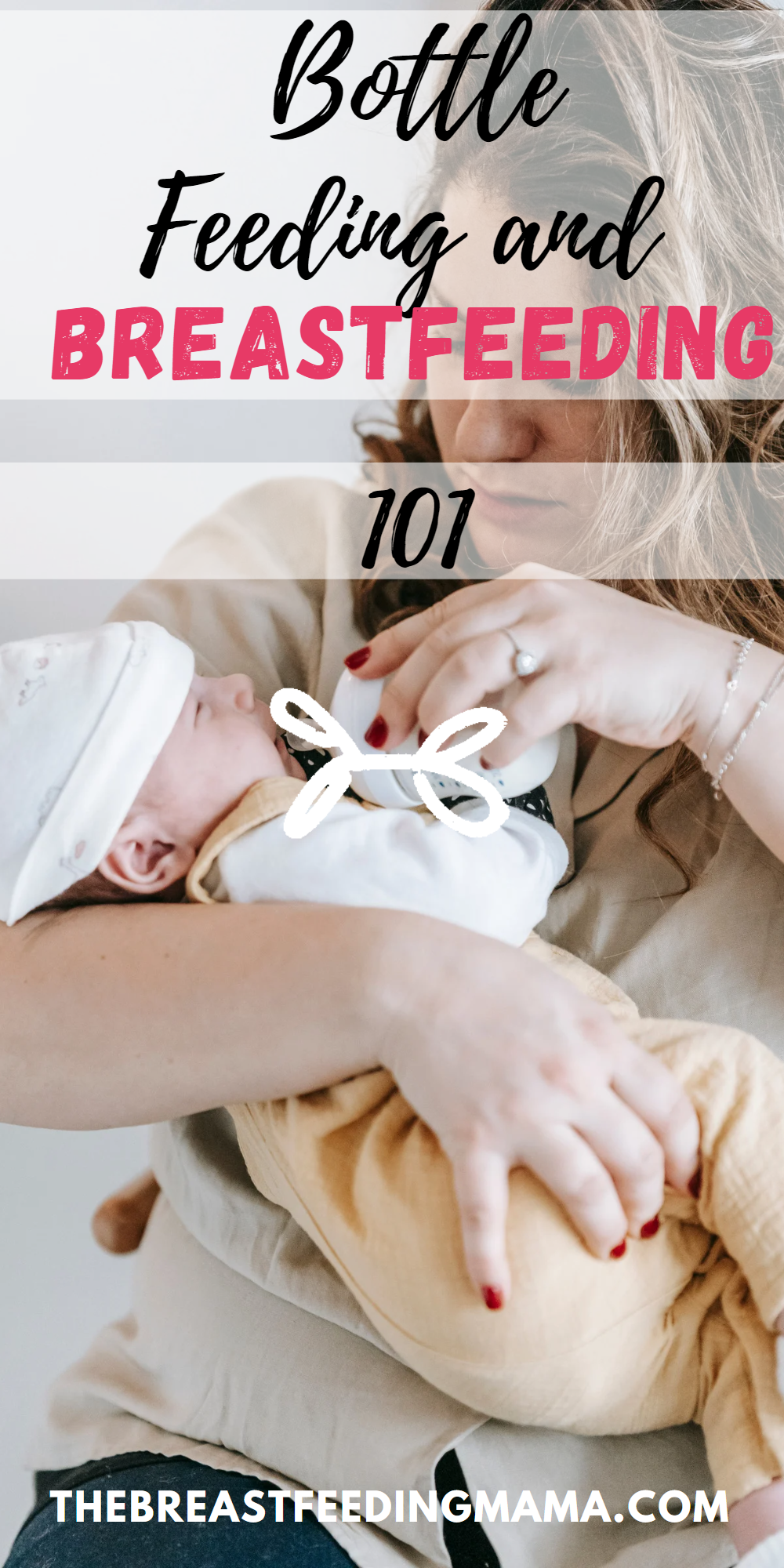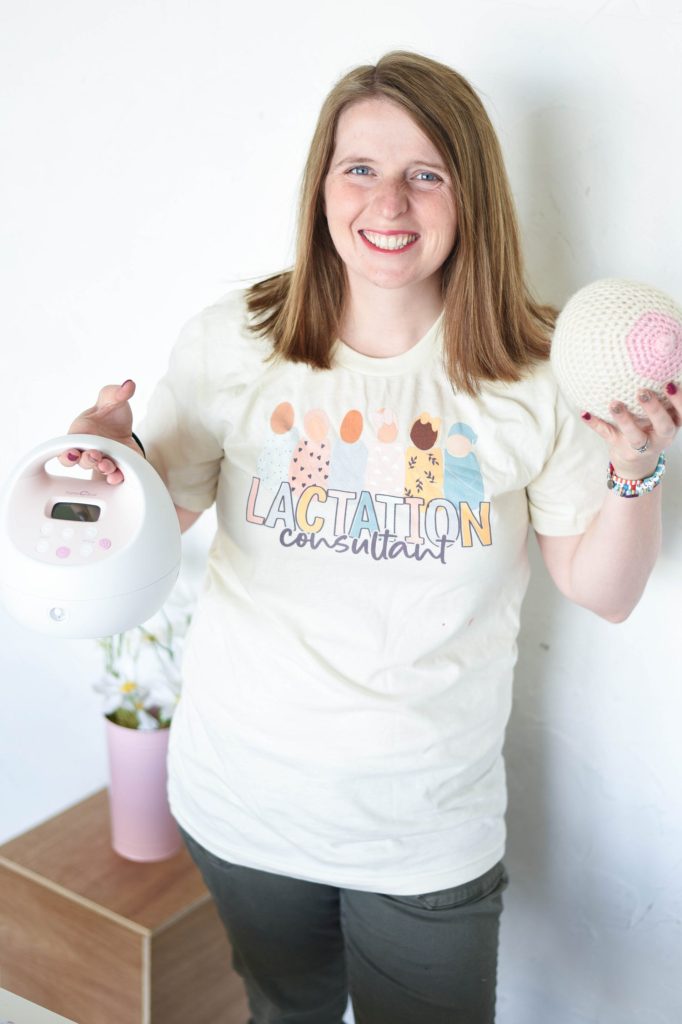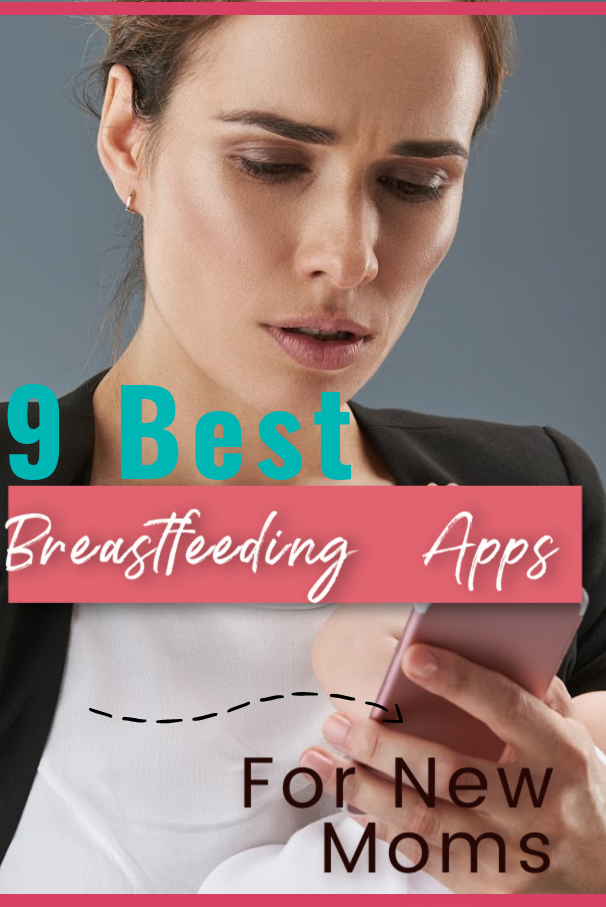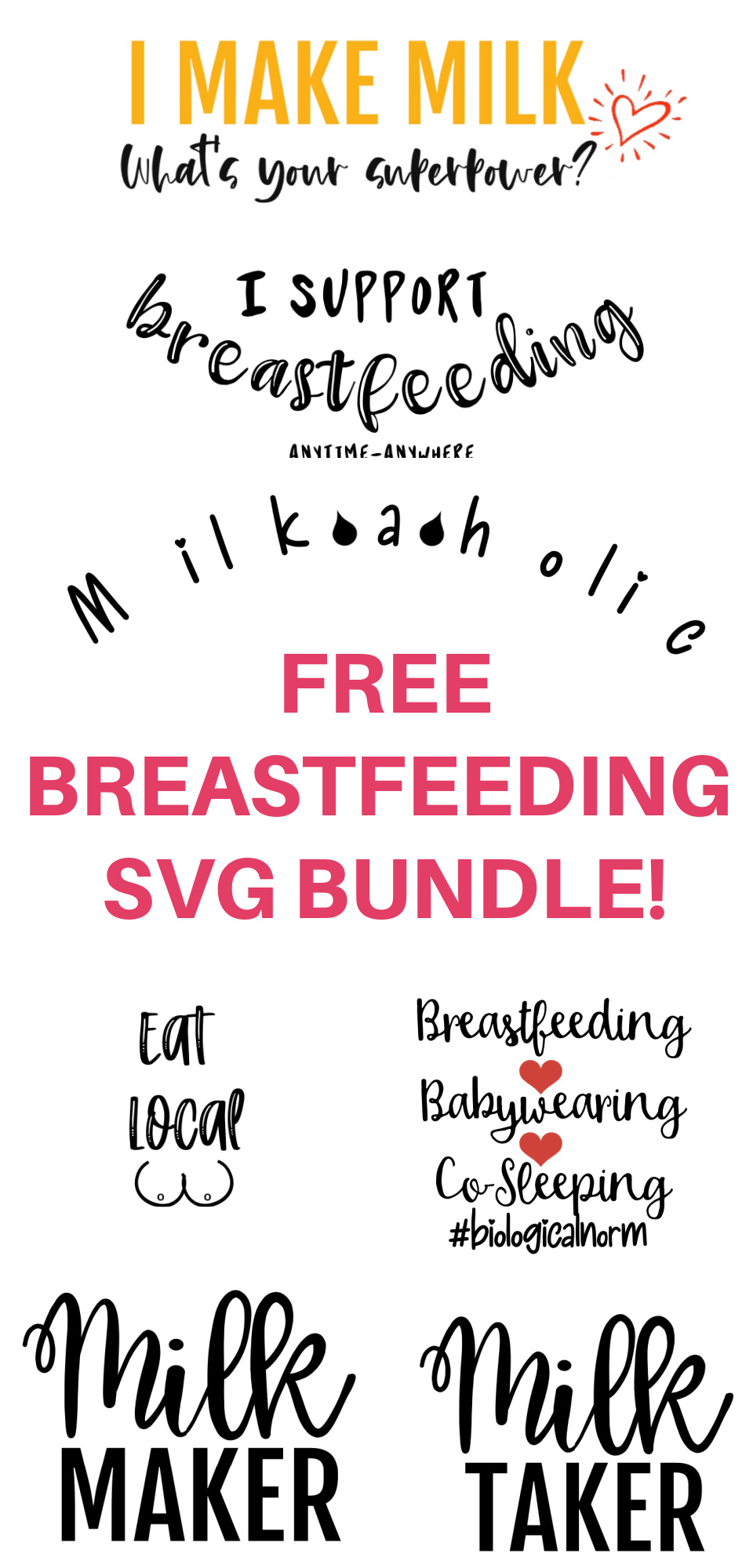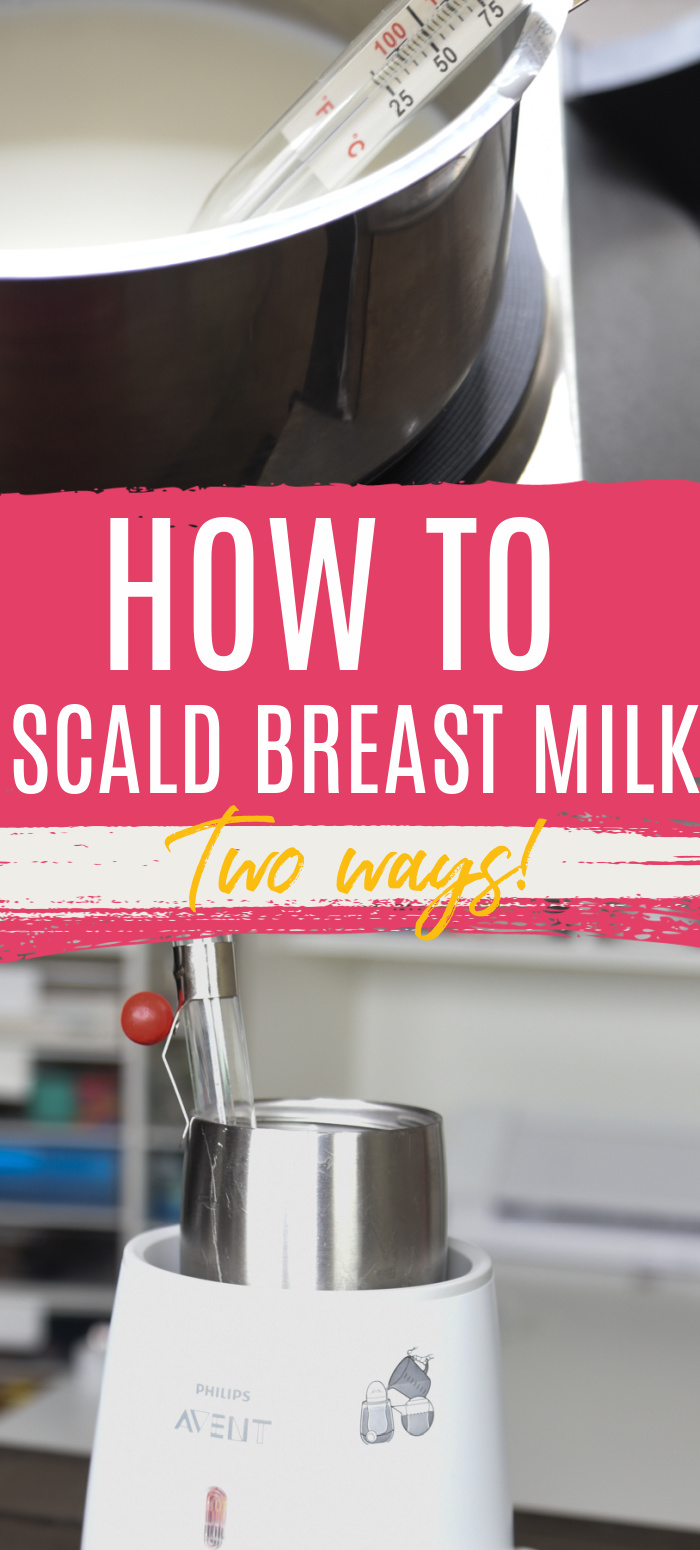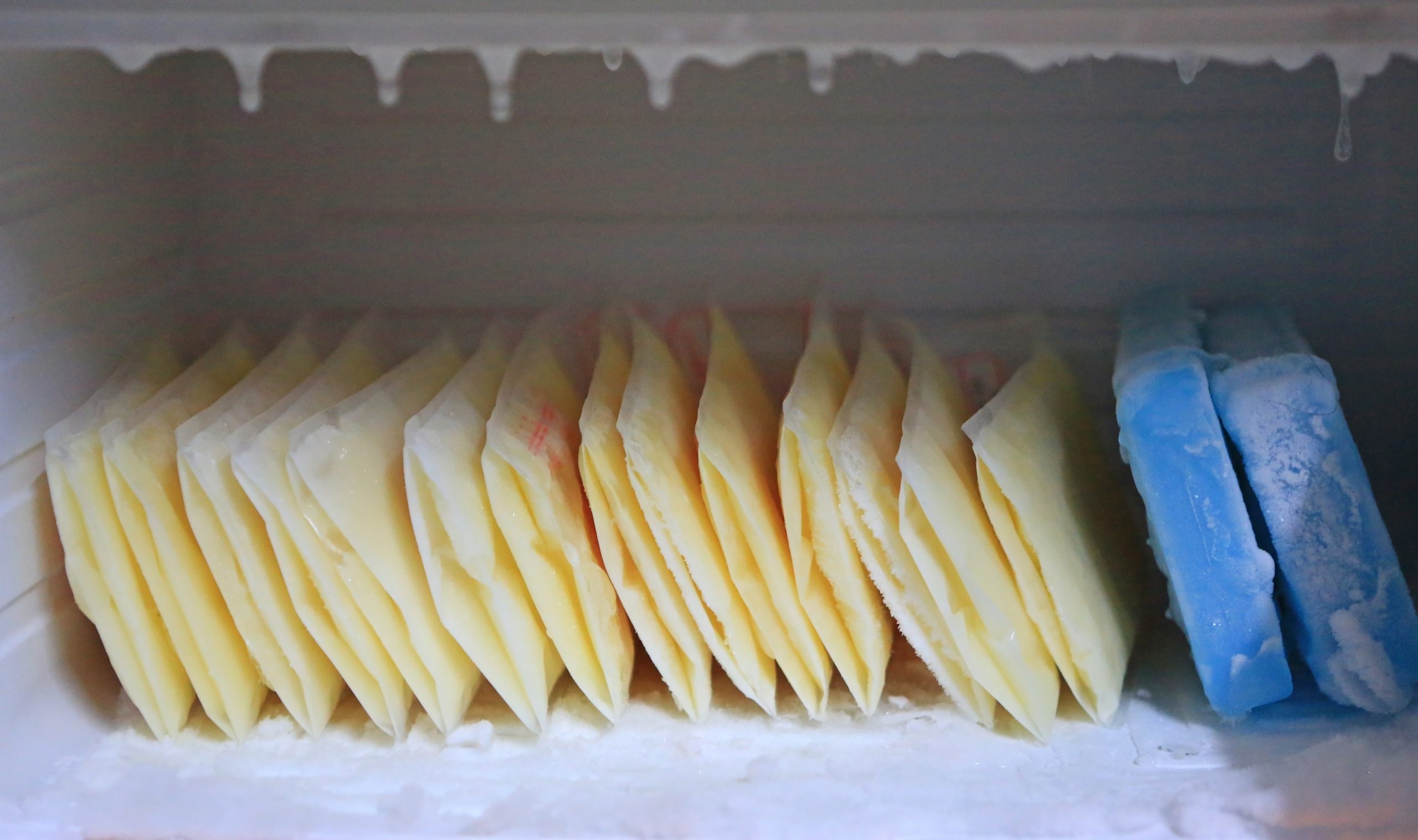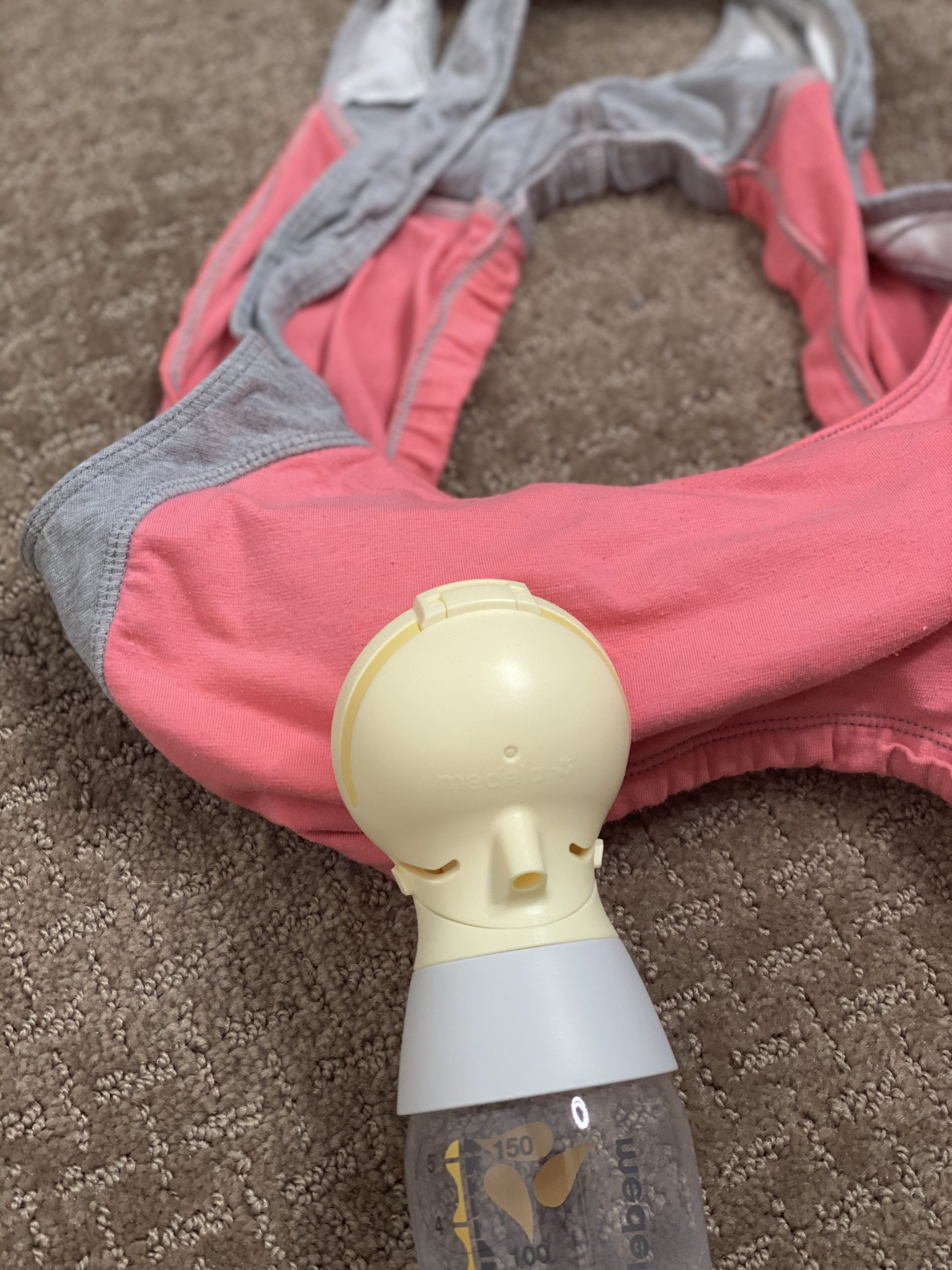If you’re a new mom trying to figure out the best way to feed your baby, you may be overwhelmed with choices and unsure where to start with bottle and breastfeeding. Thankfully, there are ways to combine both breastfeedings with bottle feeding! In this blog post, we will cover all of the essentials — from getting started on this route and managing it day-to-day.
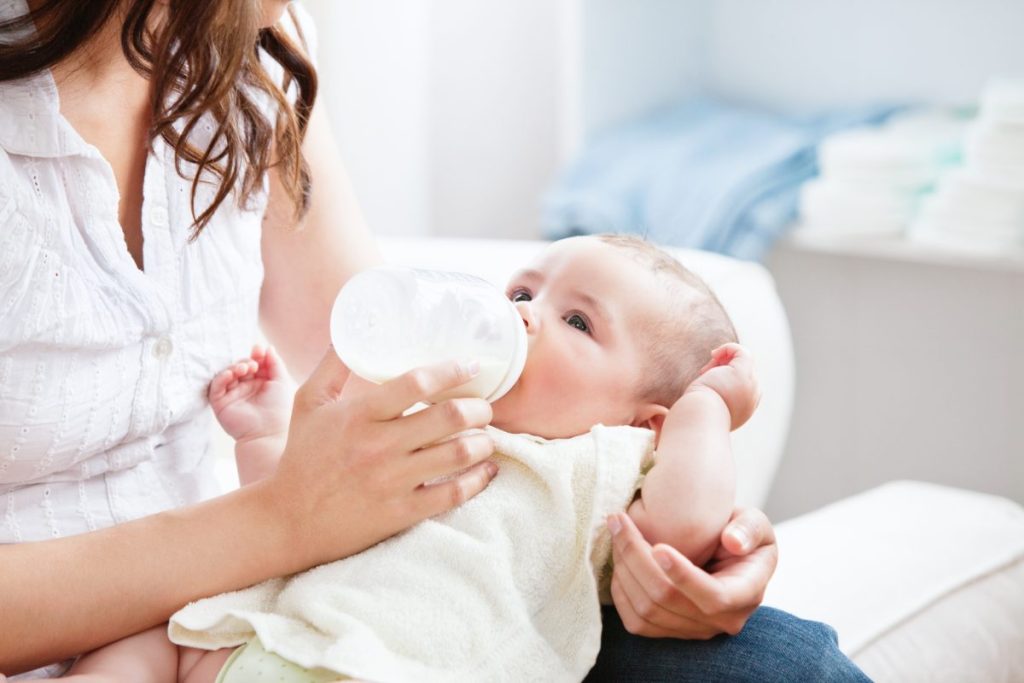
Breastfeeding can take on many forms for families, and for some, that includes bottle feeding.
Breastfeeding with bottle feeding can present unique challenges, but they can work well together with the correct knowledge and techniques.
This article shares all the information you need to get started with breastfeeding and bottle feeding to have the most success possible.
- Can you bottle-feed a breastfed baby?
- When to Introduce a Bottle to a Breastfed Baby
- What is the best bottle for a breastfed baby?
- How to Bottle Feed a Breastfed Baby
- How Much Breast Milk Should You Put in a Bottle
- Should you put infant formula in a bottle for a breastfed baby?
- Bottle Feeding Best Practices
- Bottle Feeding Problems
- Bottle Feeding FAQs
Can you bottle-feed a breastfed baby?
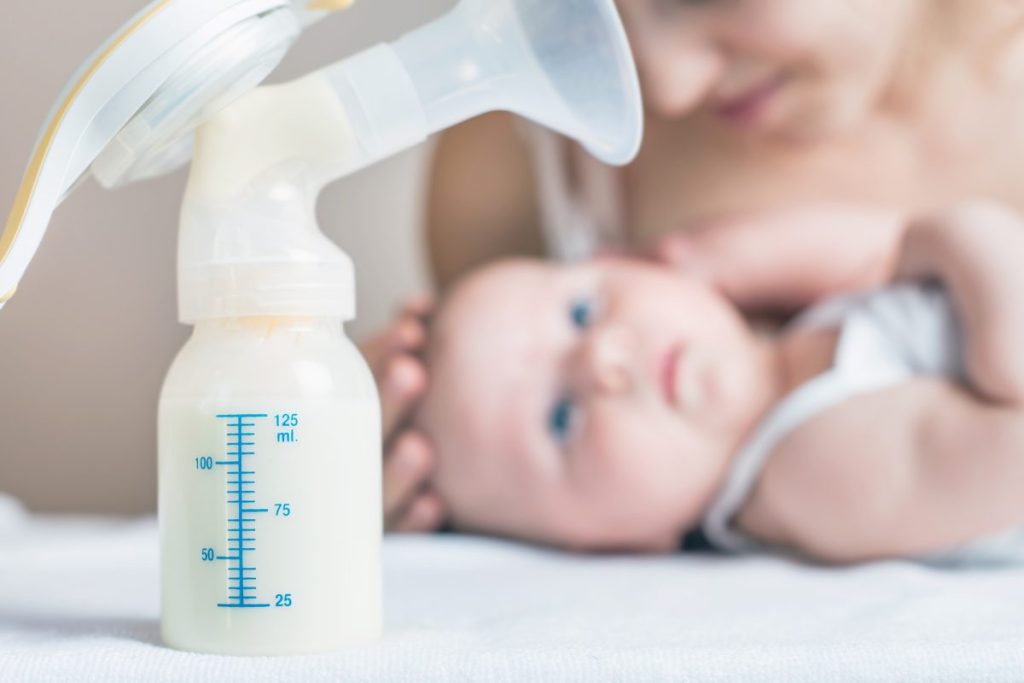
Absolutely. Many parents bottle-feed their breastfed babies. It is an entirely valid choice to bottle-feed your breastfed baby if it makes sense for your family and situation.
Here are a few scenarios where you may want to bottle-feed:
- Working parent and baby go to child care during the day.
- Baby isn’t transferring milk well and needs additional supplementation from a bottle
- You will be separated from your baby for more than a few hours, and the baby will need to eat during that day.
- You want to have others be involved in the feeding process
And that’s only a few reasons! While some parents are forced into bottle-feeding in addition to nursing directly from the breast, it comes down to personal preference and choice for most. There is always a chance that your baby won’t accept the bottle or may end up preferring the bottle, but many babies switch back and forth with ease.
Of course, it’s essential to know the mechanics of bottle feeding and approach it in a way that supports breastfeeding. But if you are breastfeeding and wondering if you can ever offer a bottle, the answer is yes.
Always work with a lactation consultant and your child’s care provider when making decisions regarding your child’s health and nutrition. If you need help, consider booking a virtual lactation consult today!
When to Introduce a Bottle to a Breastfed Baby

Barring any complications where a bottle is necessary during the first hours and days after birth, it is typically ideal to get a good handle on direct nursing before introducing a bottle to your breastfed baby. Ideally, your baby will be nursing well and gaining weight well. Of course, individual circumstances may necessitate adaptation, but this is the general recommendation.
If you want (or will need) to give a bottle, around 2-3 weeks is an excellent time to start introducing the bottle. It doesn’t need to be every day or a large feeding, but once every few days with an ounce of milk can be helpful.
Then, around four weeks, offering a “snack bottle” (a bottle with .5-1 ounce of milk) daily can be one of the best ways to ensure your baby doesn’t refuse the bottle later. This isn’t necessary for every baby and parent – if you don’t want to offer bottles regularly, you can nurse as you typically would!
Alternatives to Bottles
You may ask, “What if my baby needs supplementation after birth? Are there any alternatives to bottle?”
There are – and I would recommend considering the options if supplementation is needed shortly after birth. Working with an IBCLC or other lactation professional can be helpful in navigating how to use these methods, which include:
- Finger feeding with a syringe
- Syringe feeding
- Supplemental Nursing System – bought from the store or homemade
- Cup feeding
- Spoon feeding
You can pump or hand express breast milk or use formula with any of these methods. I think that periodontal syringes can be particularly useful.
What is the best bottle for a breastfed baby?
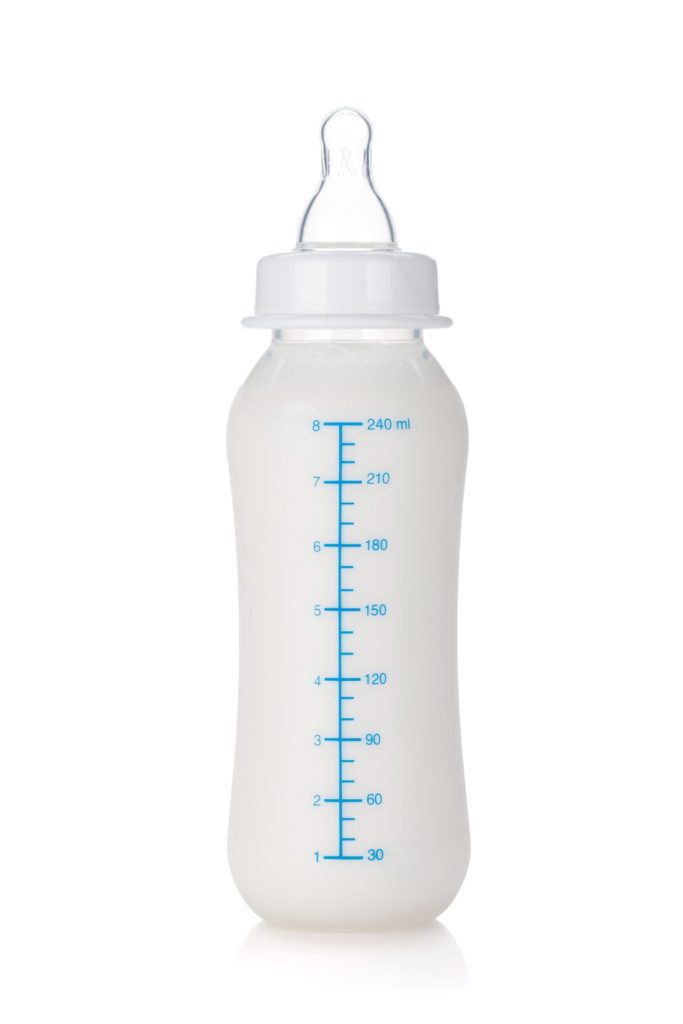
There are many different bottles on the market, and at first thought, you may think, “Does it even matter?”
And the answer is – yes! The type of bottle you use can make a big difference in your baby’s ability to switch back and forth with ease.
In The Best Bottles for Breastfed Babies, I share the best bottles for breastfed babies (and honest – including insights from other parents. However, from a lactation professional’s point of view, the three bottles I most commonly recommend are:
- Dr. Brown’s with Preemie Nipple
- Lansinoh
- Evenflow Balance+
Keep in mind that not every bottle will work well for every child. Observe how your baby feeds to determine the best bottle.
For those who are looking for glass bottles, here are the best glass bottles for breastfed babies.
In that article, I also discuss what to look for in a bottle, which includes:
- Nipple flow rate
- The shape of the nipple
With that said, you are having trouble with your baby taking a bottle; you may want to check out this list of bottles of breastfeeding babies who refuse bottles for some recommendations.
What flow nipple should you use?
You should give the slowest flow nipple that your baby can tolerate. Nipple flow rates can vary from bottle to bottle, so you may need to experiment.
I recommend starting with the slowest flow available – for instance, with Dr. Brown’s bottle, they have a preemie nipple. You do not need to increase your nipple flow rate with age. Most babies are great at staying on the slowest flow available.
If your baby is refusing the bottle, sometimes it may be appropriate to go up a size, especially if you have a faster flow at the breast.
How to Bottle Feed a Breastfed Baby
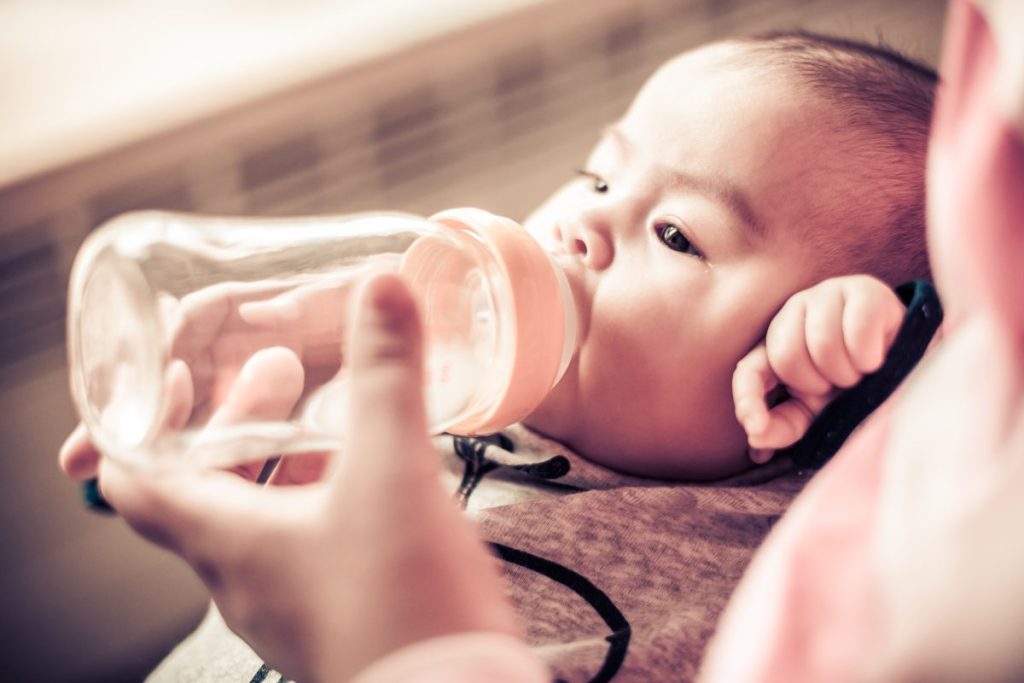
Bottle feeding your breastfed baby is more than just filling the bottle with milk and propping it up – in fact, that is a surefire way to make it harder to feed from the breast again.
For the best, most in-depth tips, I recommend reading How to Give a Breastfed Baby a Bottle and Avoid Bottle Preference. Here are a few general guidelines:
- Use a slow-flow nipple with a gradual slope.
- Fill the bottle with about 1-1.25 ounces per hour from the last time your nursed or fed
- Hold the bottle horizontally (parallel to the ground) and keep the nipple about half filled with the milk
- Have your baby sitting up. Side-lying can be appropriate to
- Tap the nipple below the nose and above the upper chin and slide it into the mouth
- Switch sides partway through
- Ensure your baby has a good latch on the nipple and is actively suckling.
- When your baby slows down their suckle, twist the nipple out of their mouth and then offer again after a few minutes to see if your baby wants it again or not.
How Much Breast Milk Should You Put in a Bottle
As mentioned above, the general recommendation is to offer 1-1.25 ounces per hour from the last time you nursed or fed. For example, if you nursed three hours again, adding 3-3.75 ounces to the bottle may be appropriate.
You can adapt this as needed, but breastfed babies don’t need large bottles. I usually don’t recommend going over five ounces in a bottle at a time. You can use this Free Breast Milk Calculator to determine how much-expressed milk or formula you need for a bottle.
You might also enjoy: Breastfeeding vs Bottle Feeding: Pros and Cons
Should you put infant formula in a bottle for a breastfed baby?
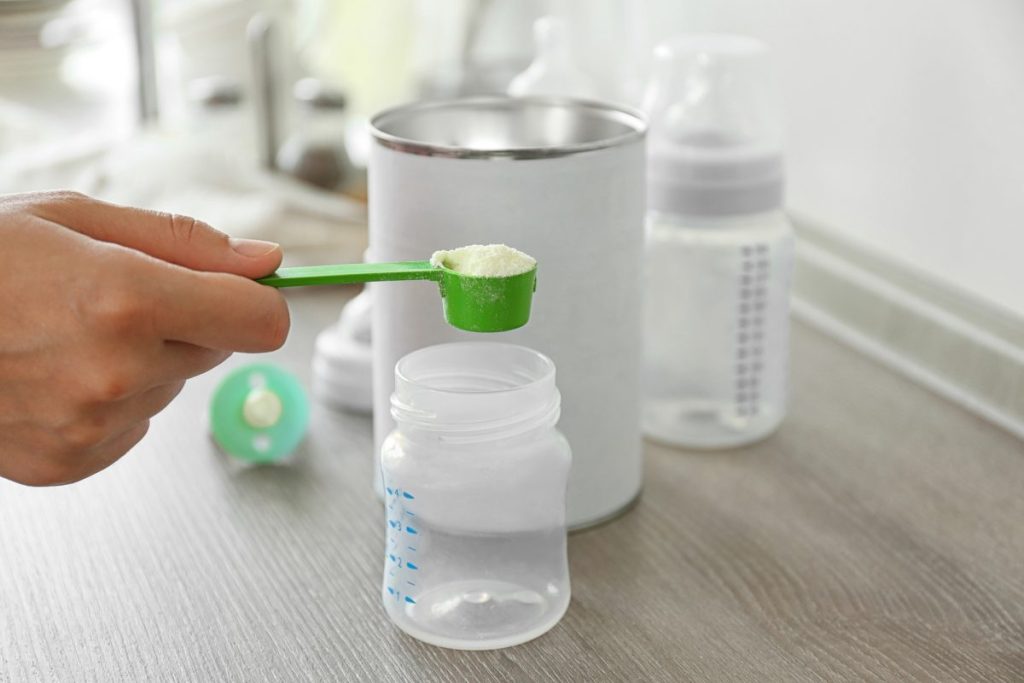
The recommendation from professional organizations such as the WHO is the following order of substances for supplementing:
- Mother’s own expressed milk
- Donor Milk
- Artificial Milk Substitute (Formula)
Formula is definitely an option for feeding your breastfed baby if that is what makes the most sense for your family.
Bottle Feeding Best Practices
Paced Feeding
The process described earlier in this article is paced feeding. This essentially allows your baby to pace themselves at the bottle in a similar manner to how they would feed at the breast. Here is a video demonstration:
Breast Milk Storage
Make sure you handle your breast milk properly and with care, as well as store it according to breast milk storage guidelines to ensure its safety and longevity. I typically recommend a 4-4-12 method:
- Four hours at room temperature
- Four days in the fridge
- 12 months in the freezer (six months is optimal)
You want to make sure you use the right disposable milk bags or reusable storage containers for breast milk as well.
How to Warm Breast Milk
Warming breast milk is a delicate process. A few guidelines to keep in mind:
- Do not warm breast milk in the microwave – microwaving can result in uneven heating as well as hot spots.
- Defrost/Warm in a bowl of warm water or a bottle warmer
- Use clean hands
- Only defrost and warm what you need
Be sure to check out this article for more information on warmed breast milk – How Long is Warmed Breastmilk Good For
How to combine formula and breast milk
Some parents choose to mix together a formula and breast milk. If you choose to do this, you should premix your formula and then add it with the breast milk unless otherwise instructed by your medical provider.
Bottle Feeding Problems
Bottle Refusal
One of the biggest issues you may encounter when you attempt to feed your breastfed baby a bottle is bottle refusal.
This can be very frustrating, especially if taking a bottle is necessary. In tips for overcoming bottle refusal, I discuss this topic in depth. Here is an overview of the ten tips I share:
- Get baby used to an artificial nipple
- Choose the right nipple
- Let your baby lead the way
- Start with a small amount of milk
- Feed in a relaxed and quiet area
- Make it fun
- Positive Reinforcement
- Try different types of bottles
- Distract the baby
- Try different times of day
- Keep it short and sweet
- Time it right
- Stop if anyone is frustrated
There are many reasons why a baby may refuse a bottle. Working with a lactation professional can be a great place to start to figure out why!
Breast Refusal
On the flip side, you may struggle with a baby who loves the bottle too much. This is often due to the faster flow of the bottle, though there can be various factors.
Here are a few things to try if your baby is refusing the breast:
- Start with the bottle and switch to the breast partway through
- Use a slow-flow nipple and paced bottle feed
- Do skin to skin
- Take a bath together
- Make sure you don’t try when the baby is super hungry
Check out this article if you are trying to get your baby back to the breast – How to Get a Baby To Breastfeed After Bottle Feeding.
High Lipase
Lipase is an enzyme that helps to break down the fats in breast milk, and it’s in everyone’s breast milk. However, some breast milk reacts differently with it, resulting in a metallic or sour taste. This happens after refrigeration or freezing the milk.
While some babies can tolerate high lipase in breast milk with no problem, it causes feeding troubles with some babies. There are different methods for fixing this, but one of the most common is through scalding your breast milk.
Bottle Feeding FAQs
Is it okay to breast and bottle feed?
Can I breastfeed during the day and bottle feed at night?
Can you overfeed with a bottle?
Is nipple confusion a real thing?
Can I prop my baby’s bottle?
Should I put formula or breast milk in the bottle?
No matter what you decide, remember that both options have their own set of pros and cons. If you ever feel like you’re struggling or not doing well, don’t hesitate to contact a lactation consultant or your child’s pediatrician for help. They can offer more support and guidance specific to your situation. Have you switched back and forth between breastfeeding and bottle feeding before? What tips do you have for other parents in the same boat?
